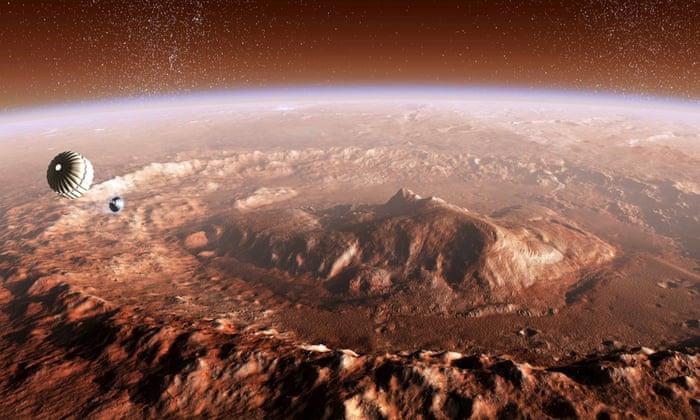Mars has liquid water just below its surface, according to new measurements by Nasa’s Curiosity rover.
Until now, scientists had thought that conditions on the red planet were too cold and arid for liquid water to exist, although there were known to be deposits of ice.
Prof Andrew Coates, head of planetary science at the Mullard Space Mullard Space Science Laboratory, University College London, said: “The evidence so far is that any water would be in the form of permafrost. It’s the first time we’ve had evidence of liquid water there now.”
The latest findings suggest that Martian soil is damp with liquid brine, due to the presence of a salt that significantly lowers the freezing point of water. When mixed with calcium perchlorate liquid water can exist down to around -70C, and the salt also soaks up water vapour from the atmosphere.
New measurements from the Gale crater show that during winter nights until just after sunrise, temperatures and humidity levels are just right for liquid brine to form.
Morten Bo Madsen, a senior Mars scientist at the University of Copenhagen and a co-investigator on the Curiosity rover, said: “The soil is porous, so what we are seeing is that the water seeps down through the soil. Over time, other salts may also dissolve in the soil and now that they are liquid, they can move and precipitate elsewhere under the surface.”
Liquid water is traditionally considered an essential ingredient for life as we known it, but Mars remains hostile for other reasons, the scientists said. The latest findings are unlikely to change the view that if life ever blossomed on Mars, it probably died out more than a billion years ago.
“There are organisms on Earth, halophiles, that can survive in salty environments, but if it’s also very cold and very dry that’s a problem” said Madsen. “The radiation on Mars nails it – that environment is very hostile.”
Prof Coates agreed: “Liquid water is one of the conditions you need for life, it’s not all of them.”
On Earth, the global magnetic field protects the atmosphere from being degraded by harmful cosmic radiation from the Sun. In the past, scientists believe that Mars had a similar magnetic field and thicker atmosphere, but that the field was lost around four billion years ago.
Today, cosmic radiation penetrates at least one metre into the Martian surface and would kill even the most robust microbes known on Earth.
Surface temperatures on Mars range from around 20C at noon, at the equator, down to lows of around −153C at the poles. The presence of perchlorate salts was discovered in 2008, but until now if was not known whether temperatures and humidity would be high enough to produce liquid brine.
The latest paper, published in Nature, analyses humidity and temperature data for a full Martian year, showing that liquid brine ought to form. Instruments on-board Curiosity also measured estimates of subsurface water concentration, which suggested that water was indeed being absorbed from the air and the surface frost by the salty soil.
The water would be present in tiny quantities between the grains of soil, rather than in droplet form. “If you dug a trench you might see that the soil at the base was a bit darker,” said Madsen.
Curiosity landed on Mars in 2012 in the large crater, Gale, located just south of the equator. The giant crater is 154 kilometres in diameter and the rim of the crater is almost five kilometres high.
In the middle of the crater lies Mount Sharp, which Curiosity is currently ascending.
Observations by the Mars probe’s stereo camera have previously shown areas characteristic of old riverbed, with rounded pebbles that indicate there were flowing rivers up to one metre deep in the past.
The latest close-up images show slanting expanses of sedimentary deposits, lying one above the other. “These kind of deposits are formed when large amounts of water flow down the slopes of the crater and these streams of water meet the stagnant water in the form of a lake,” said Madsen.


